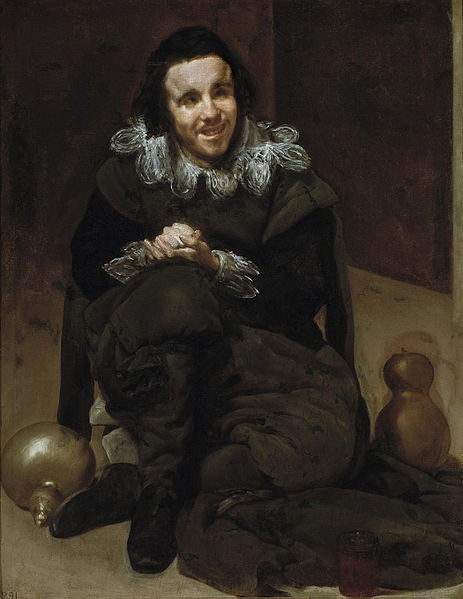
John Berger, via Verso
Bento’s Sketchbook
by John Berger
Verso, 2011
John Berger is a writer for whom the practice of mark-making, whether in drawings or language, is an essential catalogue of human life. Art is not meant to be simply an opportunity for aesthetic appreciation, it is a cultural artifact—a vital preservation of experience. This belief runs through his numerous critical essays, novels and poems, an oeuvre that spans more than five decades. For Berger, it is only when we reach out to understand the world with pencil and paper in hand that we can begin to change it.
His most recent publication, Bento’s Sketchbook, is a compilation of glimpses into the people and places that have left traces throughout his life. The stories, usually no more than three or four pages long, build into vignettes of childhood, weddings, dances, friendship, death, history and the necessity of hope. The book has the casual demeanor of a journal — sketches placed side by side with brief meditations — but one which also boasts the weight of a philosophical treatise.
While the drawings and stories within Sketchbook are Berger’s own, the philosophy is culled from the work of Baruch (Bento) de Spinoza, the 17th century Dutch thinker. In the midst of writing the letters that would make up Ethics (Spinoza’s text that established him, posthumously, as a seminal Rationalist thinker), the philosopher also did some drawing. Imagining what would fill Spinoza’s lost sketchbooks has long been a fascination for Berger; Bento’s Sketchbook becomes a kind of belated homage, Berger entwining Spinoza’s thoughts with his own.
He begins with one seemingly simple question: “Where does the impulse to draw something begin?” This inquiry meanders throughout the book, being subsumed within his own sketches, spliced between Spinoza’s writing, and then resurfacing in Berger’s poetic meditations.
One example is a progression which appears early on in the book. He starts with a drawing, a shaky, muddied sketch of a woman resting heavily on the ground, her body contorted and compressed. Earlier attempts at describing her thighs and upturned head are still visible, as if a camera’s shutter had stayed open a moment too long. Within the entry that follows his written description becomes a way of discussing the perpetual process of making, or how, in his phrasing, “drawing is correcting.” In any form of expression, he argues, we are forever revising towards a becoming. Attempting to capture the contour of a form on paper is the same as stumbling towards capturing the perfect word: failure is first necessary for meaning to arise in the process. “We who draw do so not only to make something visible to others,” Berger writes, “but also to accompany something invisible to its incalculable destination.”
His prose, with its easy and fluid lyricism, begs to be read, poured over, and soaked in. He shrugs off the authority he could quite easily claim (a stature writers of lesser knowledge are often unable to resist coveting) and writes with humble compassion. His thoughts glide so easily from one topic to the next, his tone of urgency never bordering on lecture, that it seems only natural to wonder: why aren’t more writers trying to write like this?
Berger, never shy about mixing his politics with his aesthetics, makes room in Sketchbook to take on capitalist-driven disparity. Inspired by a sketched detail of Mary Magdalene’s hands from Perugino’s Crucifixion, he begins, “The human capacity for cruelty is limitless.” When the division between rich and poor becomes an abyss, he writes,
Consumerism consumes all questioning. The past becomes obsolete. People lose their selfhood, their sense of identity, and they then locate and find an enemy in order to define themselves. The enemy — whatever their ethnic or religious nomination — is always found amongst the poor. This is where the circular pattern is vicious.
Is he directly addressing Wall Street? In light of the recent occupational protests around the country and the world, his thoughts seem too germane to not have been written just days ago. The deadlines of the publishing world are proof against the possibility. But then this is decidedly Berger — eyes always open, political fire forever raging. His words, so grounded in history and humanitarianism, begin to feel timeless, as if their relevance were set in stone. He concludes, “A protest is not principally a sacrifice made for some alternative, more just future; it is an inconsequential redemption of the present. The problem is how to live time and again with the adjective inconsequential.”
We need to be reminded that while our struggle is not new, it is through knowledge of the past that hope can be replenished. It seems we need his voice of clarity now more than ever.
Ultimately everything in Berger is an argument for the preservation of stories. In his worldview narrative is currency; stories carry within them the cultural, historical and personal knowledge that must be passed from one being to the next. Soon after the passage cited above he writes, “stories when heard stop the unilinear flow of time and render the adjective inconsequential meaningless.” Nothing in our experience of the world is inconsequential, Berger seems to say, it only seems so when we forget where we have been.
In much of his writing, his point of entry is through people — their lives, their stories, their faces and eyes. In an essay from 1986, “A Story for Aesop,” he writes,
Aesop’s eyes tell a lot about storytelling. Their expression is reflective. Everything he sees contributes to his sense of the enigma of life: for this enigma he finds partial answers—each story he tells is one—yet each answer, each story, uncovers another question, and so he is continually failing, and this failure maintains his curiosity. Without mystery…there can be no stories.
Within this essay his thoughts wander, fluently, from the Spanish tradition of portraiture to the teachings of the Koran, to the history of geography in Europe. But before revealing an impressive breadth of historical knowledge, he begins with a story from his own life: a tumultuous relationship with a neighbor’s dog. This may seem like an unusual approach, but for Berger it is essential. It is only through first navigating the personal that he can access the universal, and in the process, give new breath to those stories of history that have grown tired with age.
Eyes — whether mythic or real — are always an important focal point for Berger. He often instructs viewers to look first to the eyes of the figure, because it is there that they will find meaning within the painting. In an early essay, “The Calculations of Piero” from 1959, Berger writes,
Look again at Piero’s faces, the ones that watch us. Nothing corresponds to their eyes. Their eyes are separate and unique. It is as though everything around them, the landscape, their own faces, the nose between them, the hair above them, belonged to the explicable, indeed the already explained world: as though these eyes were looking from the outside through two slits on to this world.
Stand in front of any work by Piero della Francesca (the Quattrocentro artist known for his painfully exact perspective), and his words click into place. The perfection of Piero’s painted balance, down to every last detail, lifts his work above our world. But it is through the eyes that we can climb into the painting, accessing the humanism that hides beneath Piero’s calculations.

Velázquez, El Bufón Calabacillas, via Wikimedia Commons
Writing over half a century later, he continues this argument. When looking at one of Velázquez’s painted buffoons (El Bufón Calabacillas, 1637-39) Berger describes the eyes of the sitter as containing a “stillness” that places these comical figures, “after the laughter — beyond the transient.” Again, it is through the subject’s eyes that his expression is legible, his gaze becoming a bridge between us someone who lived and died hundreds of years ago. Turn the page, and we find Berger’s own sketch after the Velasquez painting. The jester’s eyes, though blurred with bordering splotches of ink, are fully alive.
This preoccupation with the eye is not a superficial choice; it is central to Berger’s lifelong thesis. In Ways of Seeing (1972), his best known publication that began as a BBC series, he attempted to retrain the cultural eye of museum-goers — to reveal what so much Western oil painting concealed. What social message hid behind the casually luminous derrières of Boucher’s bedroom nymphs, or the speckled sunlight that poured down on Gainsborough’s divine landscapes? The glamour of elite status: painted for us to admire, but of course, never to access. (We being, here, any class of people below the outrageously wealthy.) The history of oil painting has always been tied to the rich and powerful, and Berger insists that, when looking at such art, this realization must become part of our perception. It is only then that we can begin to truly see the image that hangs in front of us.
Whether the subject is beautiful or tragic, alluring or repulsive, we must always work for a deeper kind of looking. Bento’s Sketchbook, like all of Berger’s writing, is an attempt to encourage just that. And while he argues for the significance of personal stories, he also presses home our responsibilities to each other as cultural beings. The book prods us to open our eyes a little wider and to engage, fearlessly, with the world we have created. We must remember, Berger insists, that language and art do not just preserve past experiences; they make those of the future possible.
]]>